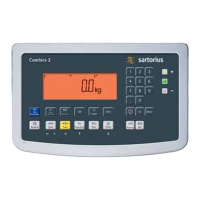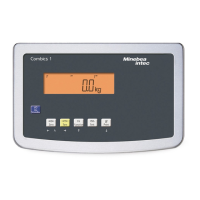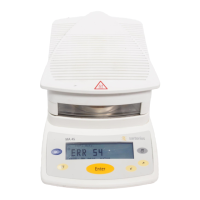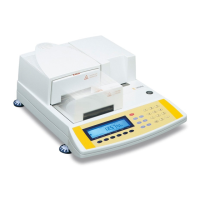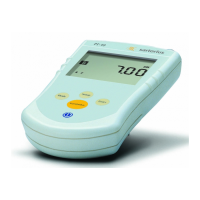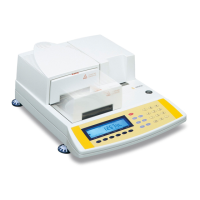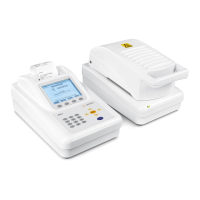Operating Instructions Combics Indicators 159
Ex-Safety Information
Page
4
of
3
65954-750-16
Safety Information
11.05.2012
Klausgrete
Drawing No.
Designation
Revision 01
These safety instructions apply to installation, use, maintenance and repair
1. The device (CAIS. indicator, CAAP weighing platform..-……-……, CAW complete scale…-……-…...)
is suitable for use in potentially explosive atmospheres of Zone 2 (Group IIC, temperature
class T4 or T6 for weighing platforms) and Zone 22 (Group IIIC; surface temperature 80°C)
according to EU Directive 94/9/EC and applicable harmonized European standards. This does
not guarantee compliance with other properties and requirements.
2. The device may only be used indoors.
3. Do not use it as a portable instrument.
4. Installation, operation, maintenance and repairs should only be performed by an authorized
specialist, in accordance with applicable laws, rules and regulations, ordinances and standards.
Particular attention should be paid to Standard EN 60079-14 within the scope of validity of EU
Directive 94/9/EC for the installation. Installation, maintenance, cleaning and repair work may
only take place with all power disconnected from the device and any connected peripheral
devices.
5. It is essential that recommendations on the installation, operation, maintenance and repair
contained in the operating instructions supplied are complied with for all equipment (including
connected devices). The temperature ranges of connected devices must also be taken into
account.
6. The device should only be used in a temperature range of -10°C … +40°C, do not expose it to
unacceptable sources of heat or cold, direct sunlight, UV radiation, shocks or vibrations, and the
installation should ensure that heat can be properly dissipated and external heat sources are
kept at a sufficient distance.
7. Tighten the cable entry glands using a torque of 5 Nm. The cable gland for the power cord should
be tightened with a torque of only 3 Nm. Install the external connecting cables firmly to avoid
damage and strain. The cable connections inside the explosion-risk area must be secured
against loosening.
8. All metal parts must be electrically connected to the same equipotential bonding conductor (PA)
so that any electrostatic charges can be conducted away from the equipment. For this purpose,
the equipment operator is obligated to connect a lead with a gauge of at least 4 mm² (cross
section) to the equipotential bonding terminal (indicated by the ground symbol) located on the
housing. A suitable ring terminal must be attached to the end of the cable. The cable must be laid
so that the ground connector cannot come loose. The connection to the equipotential bonding
conductor should be checked to see if it is of low resistance at the time of installation and at
regular intervals. The indicator and weighing platform must each be connected individually to the
equipotential bonding conductor if no metal connection (e.g. support arm) is used between them.
Do not use the shield of the connection cable for the equipotential bonding conductor.
9. Before opening devices, switch off the supply voltage, or make sure that the area is not
potentially explosive. Do not connect or disconnect any live cables inside an explosion-risk area.
10. When closing, make sure the cover screws are tightly secured.
11. The device should only be operated for the first time when it is certain that the area is not
potentially explosive.
12. Data lines to connected devices and the connection cable to the weighing platform should be
secured against accidental disconnection and may only be connected and disconnected when
the power supply is turned off. Block unused outlets to guarantee the IP 65 level of protection.
Keep any transitory voltage phenomenon away from the device.
13. Data cables are for data transfer only and may not supply any power from the connected device
to the indicator / complete scale. However, one digital weighing platform suitable for use in Zone
2 or 22 connected to the data output can be supplied via direct voltage if it can be supplied by
direct voltage of at least 16 VDC via the data output.

